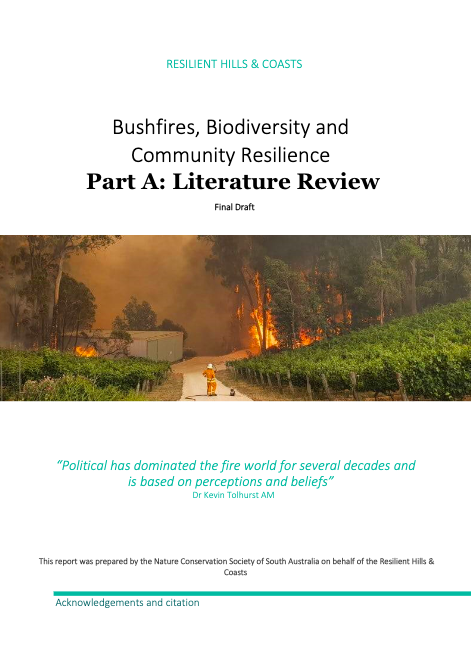Bushfires and Biodiversity
Protecting Households, Communties, and Biodiversity against Bushfires
About the Project
Climate change, urbanisation, land-use, and natural disasters are increasing the frequency and intensity of bushfires in Australia. Communities, households, and biodiversity are at risk of being negatively impacted by large-scale bushfires and inappropriate prevention activities. NCS, with the Resilient Hills & Coasts (RH&C), delivered a Bushfires and Biodiversity project, aimed at preparing Australian households, communities, and biodiversity against bushfires in the RH&C region.
This project received grant funding from the Australian Government.
What We Did
The first step was sourcing and reviewing the available literature; we reviewed >390 documents, journal articles and reports, and identified 26 potential spotlight studies for further investigation. Some key topics include:
- Community resilience
- Community perceptions about fuel reduction
- Reducing bushfire risk and improving biodiversity
- Strategic, integrated approaches
- Improving study designs and management strategies
- Empowering communities
With this information, we produced an evidence-based literature review (guided by 10 key questions) and 12 spotlights studies that considered the relationships between bushfires, biodiversity, climate change and community resilience. The findings from the literature review and spotlight studies were synthesised as a discussion paper that explored stakeholders, challenges, opportunities and how to move forward.
Key learnings have been presented as a summary document.

Why We Did It
Bushfires negatively impact communities and the natural environment. This threat is being exacerbated by development within the RH&C peri-urban spaces, which are the semi-urban areas on the fringes of our cities.
While some of South Australia’s plants and animals have adapted to bushfires, there are many that are fire sensitive and unable to survive and recover post-burn. The scale and intensity of the bushfire will also impact on the ability of people and nature to recover after a fire event. This can be due to the fire itself, as well as post-burn effects like increasing predation and weed invasion. Understanding to complexity of fire and fire ecology is critical.
We believe that by producing foundational work that can inform stakeholders about the relationship between biodiversity and bushfires, we an improve community and biodiversity resilience against the ongoing likelihood and threat of bushfires.
What We Learned
Throughout this project, we’ve learnt that we need to create resilient communities and landscapes by:
- Addressing community assumptions and perceptions about the sources of fire risk
- Utilising appropriate prescribed burning and weed management strategies
- Employing strategic urban planning and landscaping initiatives
- Empowering communities so that they may better protect their homes and landscapes
- Engaging with biodiversity and conservation values
Photos by ACT Government, Murray Lowe, and Quentin Chester
Nature Conservation Society of South Australia
5 Milner Street Hindmarsh
South Australia, 5007
Australia
(08) 7127 4630
[email protected]
ABN 40 538 422 811
Follow us on


